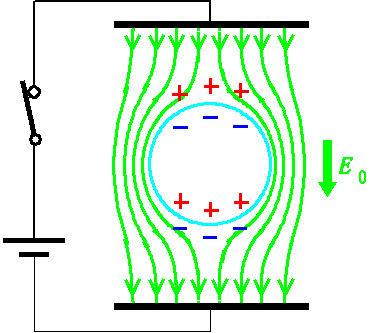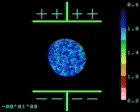Ca2+ Entry
into an Electroporated
Sea Urchin Egg

|
|

Hosoi, M. & Kinosita, K.
Jr., unpublished.
|
|
| |
When a cell is exposed to an
external electric
field, ions accumulate on both sides of the cell membrane which is
basically
impermeable to ions (see Figure). The accumulated ions create a large
transmembrane
potential, which is outside positive on the positive-electrode side and
outside negative on the negative-electrode side. When the absolute
magnitude
of the transmembrane voltage reaches about 1 V, the membrane somehow
becomes
permeable to small molecules and ions (the phenomenon called
'electroporation.')
In the movie on the right, a sea urchin egg (diameter 100 μm)
is electroporated by applying an electric field at 400 V/cm (maximal
transmembrane
voltage about 3 V) for 400 μs. This
results
in the influx of Ca2+ ions in the surrounding sea
water
into the egg interior (Ca2+ level shown in false
colors),
initially more extensive on the positive-electrode side and later on
the
negative side. The cause of this poration asymmetry is not yet clear.
The
porated membrane is eventually resealed spontaneously. On the whole,
more
Ca2+ ions enter from the negative side, leading to
the
formation of a larger fertilization envelope on the negative side.
Hibino,
M. et al., Biophys. J. 64, 1789-1800 (1993).
Kinosita,
K., Jr. et al., J. Cell Biol. 115, 67-73 (1991).
Back
to Movies
Back
to Kinosita Lab Home
|